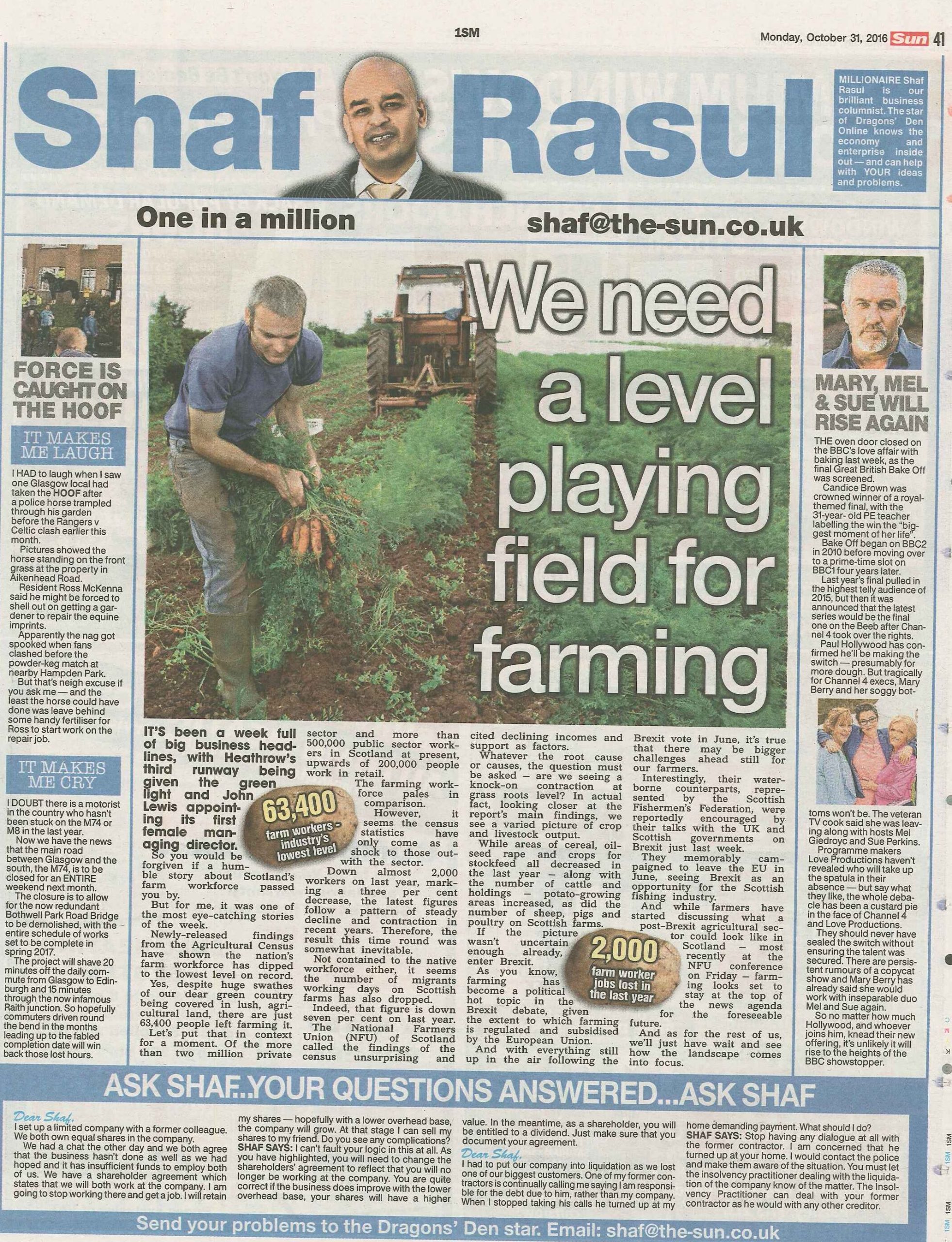In a week full of big business headlines, with Heathrow’s third runway being given the green light and John Lewis appointing its first female managing director, you would be forgiven for overlooking a humble story about Scotland’s farm workforce.
But for me, it was one of the most eye-catching stories of the week.
Newly released findings from the Agricultural Census have shown the nation’s farm workforce has dipped to the lowest level on record.
Yes, despite huge swathes of our dear green country being covered in lush, agricultural land, there are just 63,400 people left farming it.
Let’s put that in context for a moment. Of the more than two million private sector and more than half-a-million public sector workers in Scotland at present, upwards of 200,000 people work in retail. The farming workforce pales in comparison.
However, it seems the census statistics have only come as a shock to those outwith the sector.
Down almost 2000 workers on last year, marking a three per cent decrease, the latest figures follow a pattern of steady decline and contraction in recent years. Therefore, the result this time round was somewhat inevitable.
Not contained to the native workforce either, it seems the number of migrants working days on Scottish farms has also dropped. Indeed, that figure is down seven per cent on last year.
The National Farmers Union (NFU) of Scotland called the findings of the census unsurprising and cited declining incomes and support as factors.
Whatever the root cause or causes, the question must be asked – are we seeing a knock-on contraction at grass roots level?
In actual fact, looking closer at the report’s main findings, we see a varied picture of crop and livestock output.
While areas of cereal, oilseed rape and crops for stockfeed all decreased in the last year – along with the number of cattle and holdings – potato-growing areas increased, as did the number of sheep, pigs and poultry on Scottish farms.
If the picture wasn’t uncertain enough already, enter Brexit.
As you know, farming has become a political hot topic in the Brexit debate, given the extent to which farming is regulated and subsidised, at present, by the European Union.
And with everything still up in the air following the Brexit vote in June, it’s true that there may be bigger challenges ahead still for our farmers.
Interestingly, their water-borne counterparts, represented by the Scottish Fishermen’s Federation, were reportedly encouraged by their talks with the UK and Scottish governments on the subject of Brexit just last week.
They memorably campaigned to leave the EU in June, seeing Brexit as an opportunity for the Scottish fishing industry.
And while farmers the length and breadth of the country have started discussing what a post-Brexit agricultural sector could look like in Scotland – most recently at the NFU conference on Friday – farming looks set to stay at the top of the news agenda for the foreseeable future.
And as for the rest of us, we’ll just have wait and see how the landscape comes into focus.


